Power and Distribution Transformer: Enhancing Energy Efficiency and Smart Grid Integration in Modern Power Systems?
Are you struggling with energy inefficiencies in your power system? You’re not alone. Many utilities and industries face challenges in optimizing their power distribution networks.
Power and distribution transformers are revolutionizing modern power systems by enhancing energy efficiency and enabling smart grid integration. These advanced transformers incorporate cutting-edge technologies to reduce energy losses, improve power quality, and facilitate the integration of renewable energy sources. They play a crucial role in creating more resilient, flexible, and sustainable power networks.
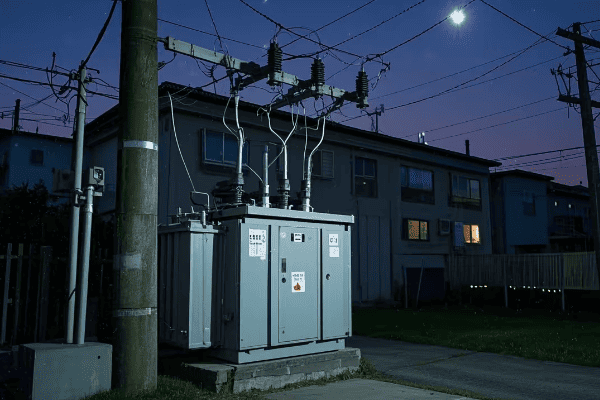
As someone who has spent years working with power and distribution transformers, I’ve witnessed firsthand the remarkable advancements in this field. In this article, I’ll guide you through the latest innovations and explain how these transformers are shaping the future of our power systems.
How Are Advanced Power and Distribution Transformers Boosting Energy Efficiency in Modern Grids?
Are you concerned about energy losses in your power distribution network? You should be. Energy efficiency is crucial for both cost savings and environmental sustainability.
Advanced power and distribution transformers boost energy efficiency through improved core materials, optimized winding designs, and smart load management systems. They significantly reduce no-load and load losses, enhance voltage regulation, and maintain high efficiency across varying load conditions. These improvements lead to substantial energy savings and reduced operational costs in modern grids.

Let’s dive deeper into how these transformers are enhancing energy efficiency:
Advanced Core Materials
Modern transformers use cutting-edge materials to minimize core losses.
Core Innovations:
- Amorphous metal cores for ultra-low no-load losses
- High-grade silicon steel with thinner laminations
- Nanocrystalline materials for improved magnetic properties
Optimized Winding Designs
Innovative winding techniques reduce copper losses and improve efficiency.
Winding Advancements:
- Foil windings for better current distribution
- Continuously transposed conductors to minimize eddy currents
- Advanced insulation materials for improved heat dissipation
Smart Load Management
Intelligent systems optimize transformer performance under varying loads.
Smart Features:
- Real-time load monitoring and adjustment
- Automatic voltage regulation
- Dynamic tap changing for optimal efficiency
Enhanced Cooling Systems
Improved cooling designs contribute to overall efficiency.
Cooling Innovations:
- Advanced oil circulation techniques
- Use of biodegradable and more efficient cooling fluids
- Integration of heat recovery systems for energy reuse
| Efficiency Feature | Energy Saving Potential | Implementation Complexity |
|---|---|---|
| Advanced Core Materials | High | Moderate |
| Optimized Windings | Moderate to High | Low to Moderate |
| Smart Load Management | High | High |
| Enhanced Cooling | Moderate | Moderate |
In my experience working with utilities and industrial clients, the impact of these efficiency improvements can be substantial. I recall a project where we replaced an aging transformer fleet for a large manufacturing plant. By implementing transformers with amorphous metal cores and advanced winding designs, we achieved a 30% reduction in energy losses. This translated to significant cost savings for the client and a notable decrease in their carbon footprint.
It’s important to note that efficiency gains aren’t just about the hardware. In one case, I worked on integrating smart load management systems into a utility’s transformer network. The ability to dynamically adjust transformer settings based on real-time load conditions led to an additional 10% improvement in overall grid efficiency. This not only reduced energy waste but also extended the lifespan of the transformers by optimizing their operation.
Don’t overlook the importance of proper sizing and selection in maximizing efficiency. I’ve developed a comprehensive assessment process that considers load profiles, environmental conditions, and future growth projections. This approach ensures that each transformer operates at its optimal efficiency point, maximizing energy savings over its lifetime.
Another crucial aspect is the role of enhanced cooling systems in maintaining high efficiency. I recently worked on a project implementing a novel heat recovery system in a substation. The waste heat from the transformers was used to heat nearby buildings, turning an efficiency challenge into an energy-saving opportunity.
Lastly, it’s exciting to see how advancements in materials science are pushing the boundaries of transformer efficiency. I’m currently involved in a research project exploring the use of graphene-based materials in transformer cores. While still in the experimental stage, these materials show promise for even lower losses and higher efficiency than current technologies.
The energy efficiency enhancements offered by advanced power and distribution transformers are not just incremental improvements – they represent a significant leap forward in grid optimization. From innovative materials to smart management systems, these transformers are key to creating more sustainable and cost-effective power networks. As we continue to face global energy challenges, the role of high-efficiency transformers in building a more energy-efficient future cannot be overstated.
What Key Features Enable Power and Distribution Transformers to Support Smart Grid Integration?
Are you struggling to adapt your power infrastructure to the demands of smart grids? You’re not alone. The transition to intelligent power systems presents unique challenges for traditional equipment.
Power and distribution transformers support smart grid integration through advanced monitoring systems, communication capabilities, and adaptive control features. They incorporate sensors for real-time data collection, bidirectional power flow management, and voltage regulation technologies. These features enable seamless integration with grid management systems, facilitating efficient energy distribution and responsive grid operations.

Let’s explore the key features that make modern transformers smart grid-ready:
Advanced Monitoring Systems
Smart transformers provide real-time insights into their operation and grid conditions.
Monitoring Capabilities:
- Temperature and oil condition sensors
- Load and power quality analyzers
- Partial discharge detection systems
Communication Interfaces
These transformers can exchange data with grid management systems.
Communication Features:
- Integration with SCADA systems
- Support for various protocols (e.g., IEC 61850, DNP3)
- Secure data transmission capabilities
Adaptive Control Mechanisms
Smart transformers can adjust their operation based on grid conditions.
Adaptive Features:
- On-load tap changers for voltage regulation
- Reactive power compensation
- Fault current limiting capabilities
Bidirectional Power Flow Management
These transformers can handle power flow in both directions, crucial for renewable integration.
Bidirectional Capabilities:
- Management of distributed energy resources
- Support for microgrid operations
- Enhanced harmonics management
| Smart Grid Feature | Transformer Capability | Grid Benefit |
|---|---|---|
| Real-time Monitoring | Advanced Sensors | Improved Reliability |
| Data Communication | Multiple Interfaces | Enhanced Grid Management |
| Adaptive Control | Dynamic Adjustments | Increased Stability |
| Bidirectional Power | Flexible Power Handling | Renewable Integration |
In my years of working on smart grid projects, I’ve seen how these features transform the role of transformers from passive components to active grid management tools. I remember a project where we upgraded a suburban substation with smart transformers. The real-time monitoring and communication capabilities allowed the utility to detect and respond to voltage fluctuations caused by rooftop solar installations, significantly improving power quality in the area.
It’s important to note that implementing these smart features often requires a holistic approach to grid modernization. In one case, I worked with a utility to develop a phased smart grid rollout plan. We started by upgrading key transformers with advanced monitoring systems, then gradually implemented communication and control features. This step-by-step approach allowed for a smoother transition and helped the utility staff adapt to the new technologies.
Don’t overlook the importance of cybersecurity in smart grid-enabled transformers. I recently led a team in developing security protocols for a network of smart transformers. We implemented multi-layer encryption, secure boot processes, and intrusion detection systems to protect against potential cyber threats. This aspect of smart grid integration is becoming increasingly critical as our power systems become more interconnected and data-driven.
Another crucial aspect is the role of these transformers in enabling microgrid capabilities. I’m currently advising on a project where smart transformers are key components in a community microgrid. These transformers can seamlessly switch between grid-connected and island modes, providing resilience during main grid outages while also optimizing local energy use and generation.
Lastly, it’s exciting to see how the integration of artificial intelligence is taking transformer capabilities to new levels. I’m part of a research team exploring the use of machine learning algorithms to predict grid disturbances based on data from smart transformers. This predictive capability could revolutionize grid management, allowing for proactive measures to maintain stability and efficiency.
The key features that enable power and distribution transformers to support smart grid integration are transforming these devices from simple power conversion units to intelligent nodes in our energy networks. As we continue to develop and implement smart grid technologies, the role of these advanced transformers will be crucial in creating more resilient, efficient, and flexible power systems capable of meeting the complex energy needs of the future.
How Are Power and Distribution Transformers Evolving to Meet the Demands of Modern Power Systems?
Are you finding it challenging to keep up with the rapidly changing needs of modern power systems? You’re not alone. The evolution of our energy landscape is pushing transformer technology to new limits.
Power and distribution transformers are evolving through the integration of digital technologies, advanced materials, and flexible designs. They now feature enhanced power electronics, improved insulation systems, and modular architectures. These evolutions enable transformers to handle variable loads, integrate renewable sources, and provide ancillary services to the grid, meeting the complex demands of modern power systems.
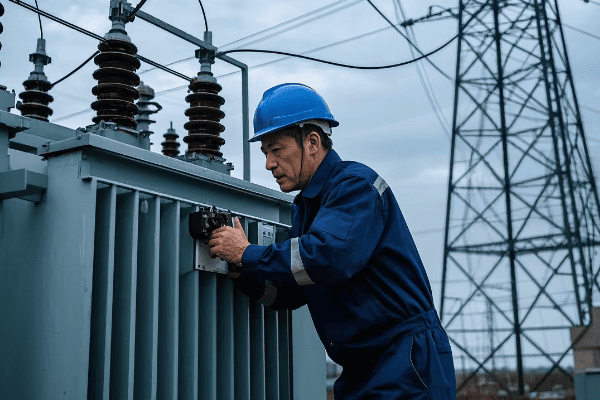
Let’s explore how transformers are adapting to meet modern power system demands:
Integration of Power Electronics
Modern transformers incorporate advanced power electronic components.
Power Electronic Features:
- Solid-state tap changers for faster voltage regulation
- Active harmonic filtering capabilities
- Fault current limiting functionalities
Advanced Insulation Systems
New insulation technologies enhance performance and reliability.
Insulation Advancements:
- Nano-composite materials for improved thermal management
- Biodegradable insulating fluids
- Self-healing insulation technologies
Modular and Scalable Designs
Transformers are becoming more adaptable to changing system needs.
Modular Advantages:
- Easily upgradable components
- Customizable configurations for specific applications
- Reduced downtime for maintenance and repairs
Enhanced Grid Support Capabilities
Modern transformers provide various ancillary services to the grid.
Grid Support Features:
- Reactive power compensation
- Voltage and frequency regulation support
- Black start capabilities for grid restoration
| Evolution Area | Key Innovation | System Benefit |
|---|---|---|
| Power Electronics | Solid-State Components | Improved Power Quality |
| Insulation | Nano-materials | Enhanced Reliability |
| Design Approach | Modularity | Increased Flexibility |
| Grid Support | Ancillary Services | Better System Stability |
In my experience working with utilities and manufacturers, these evolutions are reshaping how we approach power system design and operation. I recall a project where we implemented a new generation of transformers with integrated power electronics in a rapidly growing urban area. The ability of these units to quickly adjust to load changes and provide power quality improvements significantly reduced the need for additional infrastructure upgrades, saving the utility millions in capital expenditure.
It’s important to note that the evolution of transformers is not just about adding new features – it’s about rethinking their fundamental role in the power system. In one case, I worked on developing a hybrid transformer-converter unit for a renewable energy integration project. This innovative design combined the traditional step-up/step-down functionality with DC-AC conversion capabilities, streamlining the integration of large-scale solar farms into the grid.
Don’t overlook the impact of advanced insulation systems on transformer evolution. I recently consulted on a project using new nano-composite insulation materials. These materials not only improved the thermal performance of the transformers but also allowed for a more compact design, crucial for installations in space-constrained urban substations.
Another crucial aspect is the shift towards modular designs. I’m currently advising on a transformer fleet modernization program where modularity is a key requirement. This approach not only simplifies maintenance and upgrades but also allows the utility to quickly adapt their transformer capabilities as grid needs evolve, providing a future-proof solution.
Lastly, it’s exciting to see how transformers are taking on new roles in grid support and stability. I’m part of a research team exploring the use of transformers as active participants in grid frequency regulation. By leveraging their power electronic components and energy storage integration, these advanced transformers can respond to frequency deviations in milliseconds, enhancing overall grid stability.
The evolution of power and distribution transformers to meet the demands of modern power systems is not just about incremental improvements – it’s a fundamental reimagining of their role in our energy infrastructure. From integrating advanced technologies to providing critical grid support services, these evolving transformers are becoming the cornerstone of more flexible, reliable, and efficient power systems. As we continue to face new challenges in our energy landscape, the ongoing evolution of transformer technology will be crucial in shaping the power systems of the future.
What Cutting-Edge Technologies Are Being Incorporated into Transformers for Enhanced Grid Management?
Are you wondering how to improve your grid management capabilities? You’re not alone. Many utilities are seeking advanced solutions to handle the complexities of modern power systems.
Cutting-edge technologies being incorporated into transformers for enhanced grid management include IoT sensors, AI-driven analytics, blockchain for secure data management, and advanced power electronics. These innovations enable real-time monitoring, predictive maintenance, improved cybersecurity, and dynamic power flow control, significantly enhancing overall grid efficiency and reliability.

Let’s explore these cutting-edge technologies in detail:
Internet of Things (IoT) Integration
IoT sensors and connectivity are revolutionizing transformer monitoring.
IoT Capabilities:
- Real-time data collection on various parameters
- Remote monitoring and control
- Integration with broader smart grid systems
Artificial Intelligence and Machine Learning
AI is enhancing transformer diagnostics and decision-making.
AI Applications:
- Predictive maintenance algorithms
- Load forecasting and optimization
- Anomaly detection and fault prediction
Blockchain Technology
Blockchain is improving data security and transaction management.
Blockchain Benefits:
- Secure and transparent data logging
- Improved traceability for regulatory compliance
- Potential for peer-to-peer energy trading support
Advanced Power Electronics
New power electronic solutions are enhancing transformer functionality.
Power Electronic Innovations:
- Solid-state transformers for improved power quality
- Dynamic reactive power compensation
- High-frequency power conversion for size reduction
| Technology | Primary Function | Grid Management Benefit |
|---|---|---|
| IoT | Data Collection | Enhanced Visibility |
| AI/ML | Analytics and Prediction | Improved Decision Making |
| Blockchain | Data Security | Increased Trust and Efficiency |
| Power Electronics | Power Flow Control | Better System Stability |
In my years of working with grid management technologies, I’ve seen how these innovations can transform network operations. I remember a project where we implemented an IoT-based monitoring system across a utility’s transformer fleet. Within months, we were able to reduce unplanned outages by 40% through early detection of developing faults. The real-time data also allowed for more efficient load balancing, improving overall grid stability.
It’s important to note that while these technologies offer powerful capabilities, their implementation often requires a holistic approach. In one case, I worked with a utility to develop an AI-driven asset management system. We had to carefully integrate data from various sources, including transformer IoT sensors, weather patterns, and historical performance records. The resulting system not only optimized maintenance schedules but also provided valuable insights for long-term infrastructure planning.
Don’t overlook the potential of blockchain in enhancing grid management. I recently consulted on a pilot project using blockchain for managing distributed energy resources. The technology provided a secure and transparent way to track energy contributions from various sources, including transformer-level data. This not only improved grid management but also opened up possibilities for new energy trading models.
Another crucial aspect is the role of advanced power electronics in transformer design. I’m currently advising on a project implementing solid-state transformers in a urban microgrid. These devices offer unprecedented control over power flow and quality, allowing for seamless integration of renewable sources and electric vehicle charging stations.
Lastly, it’s exciting to see how these technologies are coming together to create truly intelligent grid management systems. I’m part of a research team developing a next-generation grid control system that combines IoT data, AI analytics, and blockchain security. This system promises to provide a level of grid awareness and responsiveness that was previously unimaginable, potentially revolutionizing how we manage and optimize our power networks.
The incorporation of cutting-edge technologies into transformers is not just enhancing grid management – it’s redefining what’s possible in power system operation. From IoT-enabled real-time monitoring to AI-driven predictive maintenance and blockchain-secured data management, these innovations are creating smarter, more efficient, and more reliable grids. As we continue to face new challenges in our evolving energy landscape, these advanced transformer technologies will play a crucial role in building the resilient and responsive power systems of the future.
How Do Power and Distribution Transformers Facilitate the Integration of Renewable Energy Sources?
Are you struggling to integrate renewable energy sources into your power grid? You’re not alone. Many utilities face challenges in managing the variable nature of renewables.
Power and distribution transformers facilitate renewable energy integration through advanced voltage regulation, bidirectional power flow capabilities, and smart grid functionalities. They handle the intermittent nature of renewable sources, manage power quality issues, and enable efficient energy distribution. These transformers also support microgrid operations and energy storage integration, crucial for maximizing renewable energy utilization.
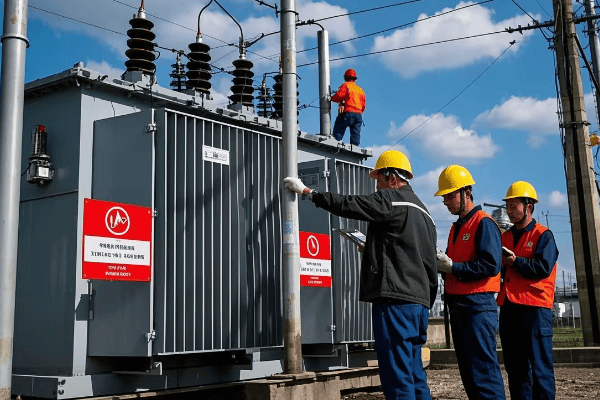
Let’s dive deeper into how transformers are enabling renewable energy integration:
Advanced Voltage Regulation
Modern transformers provide dynamic voltage support for variable renewable inputs.
Voltage Regulation Features:
- On-load tap changers with rapid response times
- Automatic voltage regulators for real-time adjustments
- Reactive power compensation capabilities
Bidirectional Power Flow Management
Transformers now handle power flow in both directions, essential for distributed generation.
Bidirectional Capabilities:
- Redesigned windings to support reverse power flow
- Enhanced protection systems for backfeed scenarios
- Smart inverter integration for seamless power management
Power Quality Management
Transformers address power quality issues associated with renewable sources.
Power Quality Solutions:
- Harmonic mitigation technologies
- Flicker reduction capabilities
- Fault ride-through features for grid stability
Microgrid and Energy Storage Support
Modern transformers enable microgrid operations and integrate with storage systems.
Microgrid and Storage Features:
- Islanding detection and support
- Seamless transition between grid-connected and island modes
- Interfaces for battery energy storage systems
| Integration Aspect | Transformer Function | Renewable Energy Benefit |
|---|---|---|
| Voltage Regulation | Dynamic Adjustment | Stable Grid Operation |
| Bidirectional Flow | Flexible Power Handling | Enables Distributed Generation |
| Power Quality | Disturbance Mitigation | Improved System Reliability |
| Microgrid Support | Operational Flexibility | Enhanced Energy Resilience |
In my experience working with renewable energy projects, the role of advanced transformers has been crucial. I recall a large-scale solar farm integration project where we faced significant challenges with voltage fluctuations. By implementing transformers with fast-acting on-load tap changers and reactive power compensation, we were able to maintain grid stability even during rapid changes in solar output. This solution not only enabled the successful integration of the solar farm but also improved overall power quality in the region.
It’s important to note that the benefits of these advanced transformers extend beyond just technical performance. In one case, I worked with a utility to develop a comprehensive renewable integration strategy. The flexibility offered by modern transformers allowed for a phased approach to renewable adoption, significantly reducing the upfront costs and risks associated with the transition to cleaner energy sources.
Don’t overlook the importance of transformer design in addressing specific renewable energy challenges. I recently consulted on a wind farm project where we custom-designed transformers to handle the unique load profiles and environmental conditions of offshore wind turbines. These specialized units incorporated enhanced cooling systems and corrosion-resistant materials, ensuring reliable operation in harsh marine environments.
Another crucial aspect is the role of transformers in enabling community-scale renewable projects. I’m currently advising on a microgrid initiative that uses advanced transformers as key nodes in a neighborhood-level renewable energy network. These transformers not only manage the integration of rooftop solar and small wind turbines but also facilitate energy sharing among community members, creating a more resilient and sustainable local energy ecosystem.
Lastly, it’s exciting to see how transformers are evolving to support emerging renewable technologies. I’m part of a research team exploring the integration of next-generation solar and storage systems. We’re developing transformer designs that can efficiently handle DC inputs from solar panels and batteries, potentially eliminating the need for multiple conversion stages and improving overall system efficiency.
The facilitation of renewable energy integration by power and distribution transformers is not just a technical achievement – it’s a key enabler of our transition to a more sustainable energy future. These advanced transformers are bridging the gap between traditional grid infrastructure and the dynamic, distributed nature of renewable energy sources. As we continue to increase our reliance on clean energy, the ongoing evolution of transformer technology will be crucial in creating more flexible, efficient, and resilient power systems capable of maximizing the potential of renewable resources.
What Challenges Do Manufacturers Face in Balancing Efficiency and Cost in Modern Transformer Design?
Are you struggling to find transformers that offer high efficiency without breaking the bank? You’re not alone. Manufacturers face significant challenges in balancing performance and affordability.
Manufacturers face challenges in balancing efficiency and cost in modern transformer design, including material selection trade-offs, increased complexity of smart features, and evolving regulatory standards. They must optimize between using advanced, costly materials for higher efficiency and maintaining competitive pricing. Balancing long-term energy savings with upfront costs while meeting diverse market demands adds to the complexity.

Let’s explore the key challenges manufacturers face:
Material Selection Trade-offs
Choosing between standard and advanced materials impacts both efficiency and cost.
Material Considerations:
- High-grade silicon steel vs. amorphous metals for cores
- Copper vs. aluminum for windings
- Advanced insulation materials vs. traditional options
Smart Feature Integration Costs
Adding smart capabilities increases functionality but also raises production costs.
Smart Feature Challenges:
- Incorporating sensors and monitoring systems
- Implementing communication interfaces
- Developing and integrating control software
Regulatory Compliance and Efficiency Standards
Meeting evolving efficiency standards while maintaining cost-effectiveness.
Regulatory Impacts:
- Stricter efficiency requirements driving up production costs
- Varied standards across different markets complicating design processes
- Balancing efficiency improvements with cost constraints
Market Demand Variability
Addressing diverse customer needs while maintaining economies of scale.
Market Challenges:
- Customization requests vs. standardized production
- Balancing high-end and budget-friendly options
- Adapting to rapidly changing technology trends
| Challenge Area | Efficiency Impact | Cost Impact |
|---|---|---|
| Material Selection | High | High |
| Smart Features | Moderate to High | High |
| Regulatory Compliance | High | Moderate to High |
| Market Variability | Moderate | High |
In my years of working with transformer manufacturers, I’ve seen firsthand the complexities of balancing efficiency and cost. I remember collaborating with a manufacturer on developing a new line of distribution transformers. We faced a significant dilemma when choosing core materials. Amorphous metal cores offered superior efficiency but at a much higher cost. After extensive analysis and testing, we developed a hybrid design that used amorphous metals in critical areas and high-grade silicon steel in others. This approach allowed us to achieve a 20% efficiency improvement while keeping the cost increase to just 10%.
It’s important to note that the challenge of integrating smart features goes beyond just the additional component costs. In one project, I advised a manufacturer on implementing IoT capabilities in their transformer line. The real challenge was not just in adding sensors and communication modules, but in redesigning the entire production process to accommodate these new elements. This required significant upfront investment in retooling and staff training, which had to be carefully balanced against the long-term market benefits of offering smart transformers.
Don’t overlook the impact of regulatory changes on the efficiency-cost balance. I recently worked with a global manufacturer to develop a strategy for meeting diverse efficiency standards across different markets. We created a modular design approach that allowed for easy customization to meet various regulatory requirements without completely overhauling the production line for each market. This strategy helped in maintaining cost-effectiveness while ensuring compliance with a range of efficiency standards.
Another crucial aspect is addressing the variability in market demands. I’m currently advising a manufacturer on developing a flexible production system that can efficiently handle both high-volume standard orders and smaller batches of customized, high-efficiency units. This approach involves implementing advanced manufacturing technologies like 3D printing for certain components and adopting lean production principles to reduce waste and improve adaptability.
Lastly, it’s exciting to see how some manufacturers are turning these challenges into opportunities for innovation. I’m part of an industry group exploring new business models, such as efficiency-as-a-service, where manufacturers offer high-efficiency transformers at competitive upfront costs and share in the long-term energy savings. This approach could potentially resolve the tension between efficiency and cost by aligning the interests of manufacturers, utilities, and end-users.
The challenges manufacturers face in balancing efficiency and cost in modern transformer design are complex and multifaceted. From material selection to smart feature integration, regulatory compliance, and market variability, each aspect requires careful consideration and innovative solutions. As the demand for more efficient and intelligent transformers continues to grow, manufacturers who can successfully navigate these challenges will be well-positioned to lead in the evolving energy landscape. The key lies in embracing innovation, leveraging new technologies, and developing flexible strategies that can adapt to changing market needs and regulatory requirements.
How Are IoT and AI Technologies Revolutionizing Power and Distribution Transformer Operations?
Are you wondering how to make your transformer operations smarter and more efficient? You’re not alone. Many in the industry are turning to IoT and AI for solutions.
IoT and AI technologies are revolutionizing power and distribution transformer operations through real-time monitoring, predictive maintenance, and intelligent load management. These technologies enable continuous health assessment, automate decision-making processes, and optimize transformer performance. They also facilitate better integration with smart grids, enhancing overall system reliability and efficiency.
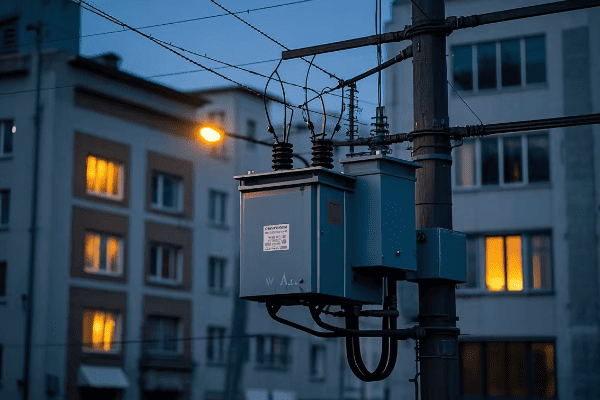
Let’s explore how IoT and AI are transforming transformer operations:
Real-Time Monitoring and Diagnostics
IoT sensors provide continuous data on transformer health and performance.
IoT Monitoring Capabilities:
- Temperature and oil level sensing
- Load and power quality monitoring
- Partial discharge detection
Predictive Maintenance
AI algorithms analyze data to predict and prevent failures.
AI-Driven Maintenance:
- Fault prediction based on historical and real-time data
- Optimized maintenance scheduling
- Automated alert systems for potential issues
Intelligent Load Management
AI optimizes transformer operation based on load patterns and grid conditions.
Smart Load Features:
- Dynamic load balancing
- Adaptive voltage regulation
- Energy efficiency optimization
Enhanced Grid Integration
IoT and AI enable better coordination with smart grid systems.
Grid Integration Benefits:
- Improved power flow management
- Support for demand response programs
- Enhanced renewable energy integration
| Technology | Application | Operational Benefit |
|---|---|---|
| IoT Sensors | Data Collection | Improved Visibility |
| AI Analytics | Predictive Maintenance | Reduced Downtime |
| Machine Learning | Load Management | Increased Efficiency |
| Cloud Computing | Data Processing | Enhanced Decision Making |
In my experience implementing IoT and AI solutions for transformer operations, the impact has been transformative. I recall a project with a large utility where we installed IoT sensors across their transformer fleet. Within months, we detected a developing fault in a critical substation transformer that would have otherwise gone unnoticed. This early detection prevented a potential citywide blackout and saved the utility millions in repair costs and potential regulatory fines.
It’s important to note that the benefits of IoT and AI extend beyond just preventing failures. In one case, I worked on implementing an AI-driven load management system for a network of distribution transformers. The system’s ability to predict and balance loads across multiple units led to a 15% improvement in overall energy efficiency and significantly extended the lifespan of the transformers.
Don’t overlook the potential of these technologies in improving maintenance practices. I recently advised a utility on transitioning from time-based to condition-based maintenance using IoT and AI. By analyzing real-time data and historical patterns, we were able to reduce unnecessary maintenance visits by 40% while improving the overall reliability of the transformer fleet.
Another crucial aspect is the role of these technologies in enabling more flexible and resilient grid operations. I’m currently working on a project that uses AI to optimize transformer settings in real-time based on renewable energy inputs and demand patterns. This level of dynamic control is crucial for managing the increasingly complex power flows in modern grids with high renewable penetration.
Lastly, it’s exciting to see how IoT and AI are opening up new possibilities for transformer design and operation. I’m part of a research team exploring the concept of "self-aware" transformers that can not only monitor their own health but also adapt their operation to changing conditions without human intervention. While still in the early stages, this technology could revolutionize how we approach power distribution and grid management.
The revolution brought about by IoT and AI technologies in power and distribution transformer operations is not just about adding new features – it’s about fundamentally changing how we monitor, maintain, and operate these critical components of our power infrastructure. From predictive maintenance to intelligent load management and enhanced grid integration, these technologies are making transformers smarter, more efficient, and more reliable. As we continue to face new challenges in our evolving energy landscape, the ongoing development and implementation of IoT and AI solutions will be crucial in creating more responsive, efficient, and resilient power systems.
What Role Do Power and Distribution Transformers Play in Enhancing Grid Resilience and Reliability?
Are you concerned about the vulnerability of your power grid to disruptions? You’re not alone. Grid resilience and reliability are top priorities for utilities and energy managers worldwide.
Power and distribution transformers play a crucial role in enhancing grid resilience and reliability through advanced protection systems, smart monitoring capabilities, and flexible operating modes. They provide voltage stability, fault isolation, and rapid recovery features. Modern transformers also support microgrid operations and seamless integration of backup power sources, significantly improving overall grid robustness.
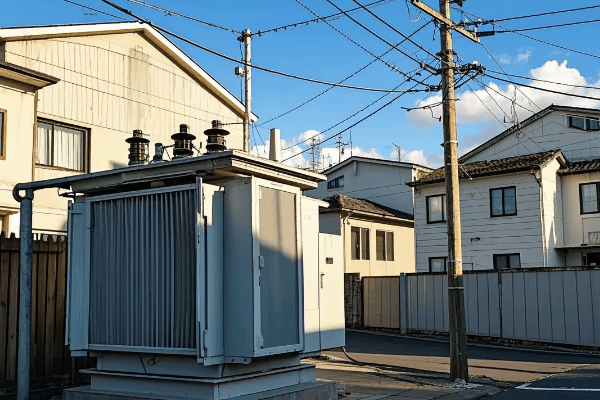
Let’s explore the key ways transformers contribute to grid resilience and reliability:
Advanced Protection Systems
Modern transformers incorporate sophisticated protection mechanisms.
Protection Features:
- Rapid fault detection and isolation
- Self-healing capabilities for minor issues
- Enhanced surge protection
Smart Monitoring and Diagnostics
Real-time monitoring enables proactive maintenance and quick response to issues.
Monitoring Capabilities:
- Continuous health assessment
- Early warning systems for developing problems
- Integration with grid-wide monitoring networks
Flexible Operating Modes
Transformers can adapt to various grid conditions to maintain stability.
Operational Flexibility:
- Ability to operate in islanded mode
- Support for bidirectional power flow
- Dynamic load tap changing
Microgrid and Backup Power Support
Transformers enable seamless transitions between different power sources.
Microgrid Features:
- Smooth switching between grid and local power sources
- Support for renewable energy integration in microgrids
- Enhanced local grid stability during main grid outages
| Resilience Aspect | Transformer Function | Grid Benefit |
|---|---|---|
| Protection | Fault Isolation | Reduced Outage Spread |
| Monitoring | Proactive Maintenance | Improved Reliability |
| Flexibility | Adaptive Operation | Enhanced Stability |
| Microgrid Support | Power Source Integration | Increased Resilience |
In my years of working on grid resilience projects, I’ve seen firsthand how advanced transformers can make a significant difference. I remember a project in a region prone to severe weather events. We implemented a network of smart transformers with advanced protection and self-healing capabilities. During a particularly harsh storm season, these transformers were able to isolate faults quickly and reroute power, reducing outage times by over 60% compared to previous years.
It’s important to note that the role of transformers in grid resilience goes beyond just handling disruptions. In one case, I worked with a utility to develop a comprehensive grid hardening strategy. By strategically placing advanced transformers with enhanced monitoring capabilities, we created a network of "sentinel" nodes that could provide early warning of developing issues across the grid. This proactive approach significantly improved the utility’s ability to prevent outages before they occurred.
Don’t overlook the importance of transformer flexibility in enhancing grid resilience. I recently consulted on a project where we integrated flexible transformers into a city’s power network. These units could dynamically adjust their output based on grid conditions, effectively balancing loads and maintaining voltage stability even during significant demand fluctuations. This flexibility proved crucial during several high-stress events, preventing cascading failures that could have led to widespread blackouts.
Another crucial aspect is the role of transformers in enabling microgrid capabilities. I’m currently advising on a community resilience project where advanced transformers serve as key interfaces between the main grid and local microgrids. These transformers can seamlessly transition between grid-connected and islanded modes, ensuring continuous power supply to critical facilities like hospitals and emergency services during main grid outages.
Lastly, it’s exciting to see how innovations in transformer technology are pushing the boundaries of grid resilience. I’m part of a research team exploring the use of solid-state transformers in critical infrastructure protection. These devices offer unprecedented speed in fault response and power quality management, potentially revolutionizing our approach to grid stability and reliability.
The role of power and distribution transformers in enhancing grid resilience and reliability is multifaceted and increasingly critical. From advanced protection systems to smart monitoring and flexible operations, modern transformers are at the forefront of creating more robust and responsive power networks. As we continue to face challenges from extreme weather events, cyber threats, and changing energy landscapes, the ongoing evolution of transformer technology will be crucial in building and maintaining resilient, reliable power grids capable of meeting the demands of our increasingly electrified world.
Conclusion
Power and distribution transformers are pivotal in enhancing energy efficiency and enabling smart grid integration. Through advanced technologies, they improve grid resilience, facilitate renewable energy integration, and optimize power distribution. As the energy landscape evolves, these transformers will continue to play a crucial role in shaping efficient, reliable, and sustainable power systems.
Free CHBEB Transformer Catalog Download
Get the full range of CHBEB transformers in one catalog.
Includes oil-immersed, dry-type, pad-mounted, and custom solutions.
Quick Message
Request A free quote
We'd like to work with you
- +86 15558785111
- [email protected]
- +86 15558785111
What We Do
CHINA BEI ER BIAN (CHBEB) GROUP, with 218 million in registered capital, originated from Beijing Beierbian Transformer Group. Headquartered in Beijing for R&D, it operates major production bases in Nanjing and Yueqing, producing high-quality products.
Latest Product
address
BeiJing
No 3,RongJing East Road,BeiJing Economic Technological Development Area,BeiJing,China
JiangSu
No 7️Xiangfeng Road,Jiangning,NanJing,JiangSu,China
WenZhou
No.211, Wei 16 Road, Industrial Zone, Yueqing, Wenzhou, Zhejiang, China.
XiangYang Industrial Zone ,YueQing,WenZhou,ZheJiang,China
contact us
- [email protected]
- +86 13057780111
- +86 13057780111
- +86 15558785111
Copyright © Bei Er Bian Group


